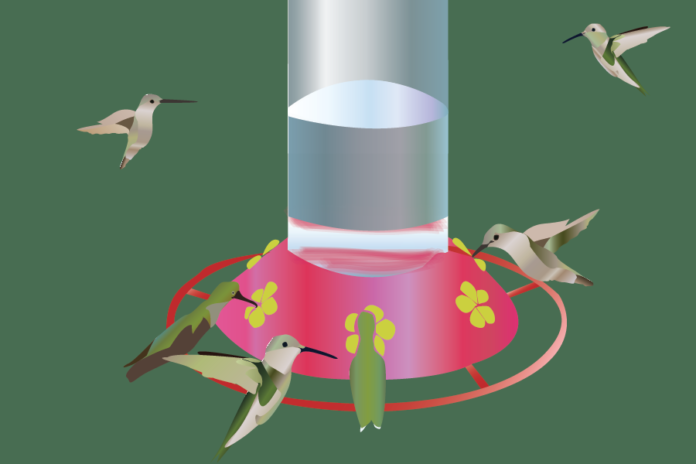UC Davis researchers use tiny transponders and urban feeders to study hummingbird behavior
Researchers at UC Davis studied the habits and visits of Anna’s hummingbirds and Allen’s hummingbirds to urban feeders in an effort to further understand their behavior and health. The feeders were equipped to beep every time a hummingbird visited, giving researchers information about the frequency and duration of the visits without disturbing the hummingbirds’ natural routines.
“We used Passive Integrated Transponders, which is basically a transponder in a tiny 8mm glass bead,” said Ruta Bandivadekar, a visiting research scholar in the UC Davis School of Veterinary Medicine. “The challenge is the weight of the transponder as you cannot exceed 3% percent of the body weight of the bird while marking it by any method. These tags were 0.01gms in weight so well within the limit. Because the tags were inserted subcutaneously, understanding the anatomy is very important so as to not puncture any air sacs or not injure the backbone of the bird.”
Passive Integrated Transponders, or PIT tags, transmit the unique tag number when in the range of the receiver antenna. The antenna picks up the unique tag number and stores the corresponding information.
There was data corresponding to approximately 65,500 feeder visits. Combing through that data proved to be a challenge, but the researchers developed a method to quantify the duration of each visit and detect if multiple hummingbirds were using the feeder at concurrent times. This allowed the researchers to find out which hummingbirds visited the feeder at the same time and which ones avoided each other. This new feeder system could lead to better analysis of other behavioral patterns.
“Implementation of our new feeder system on a larger scale in a region could help us understand the seasonal dynamics of [the] hummingbird population,” said Pranav Pandit, a researcher at the UC Davis EpiCenter for Disease Dynamics. “The system will be able to give us a closer look at our questions related to the ecology of these tiny wonders from the avian world.”
These transponders are expected to help improve future research on hummingbirds as well.
“There is a lot to learn about hummingbirds, and by using miniaturized technology, we can really expand our understanding of what these avian pollinators are doing,” said Lisa Tell, a professor at the UC Davis School of Veterinary Medicine. “Establishing methods for gathering baseline data is really important and could potentially help conserve and protect these amazing birds in the future.”
Written by: Kriti Varghese — science@theaggie.org





